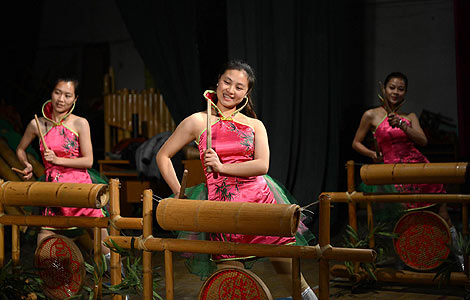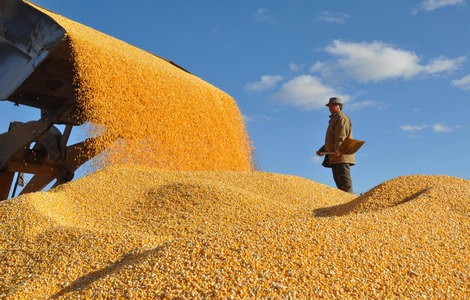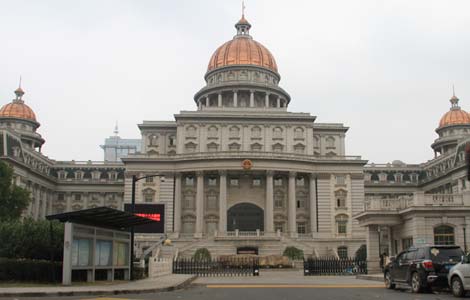
BEIJING - China's state-owned enterprises (SOEs) and private businesses are not oppositional forces, but complementary ones, and allegations of a widening development gap between the two sectors is a totally "false proposition," according to a renowned Chinese economist.
Hu Angang, director of the Center for China Studies at Tsinghua University, refuted a popular description of the Chinese economy that says SOEs have gained rising dominance over the withering private sector, or that "the state advances and the private sector retreats."
The premise of such a notion is that SOEs and the private sector are playing a zero-sum game that involves no cooperation and one sector's gain results in the other's loss, but this does not agree with the facts, Hu wrote in his latest article.
"The true relationship between the two sectors is not one of opposition, but one of mutual promotion and coordinated development," he wrote, noting that there has not been a clear definition of "the state advances and the private sector retreats" and it is not supported by professional analysis.
As an economist, Hu felt obliged to clarify the truth and basic trends to the public based on existing data.
Whether judging from the number of enterprises, employment statistics, industrial output or profits, such a phenomenon does not exist based on the figures of both sectors' developments in past years, he wrote.
Figures from the National Bureau of Statistics show that the number of Chinese industrial above-scale SOEs have declined from 64,700 in 1998 to 20,300 in 2010, and provided 27.8 percent of the total industrial profits of above-scale enterprises that year.
In the same period, the number of above-scale industrial private enterprises surged to 272,300 in 2010 from 10,700 in 1998, comprising more than 60 percent of the total number of above-scale enterprises. These private enterprises accounted for 28.5 percent of the nation's total industrial profits in 2010, up from 4.6 percent in 1998.
SOEs have also contributed more to government tax revenue than private businesses, according to Hu. In 2010, SOEs turned in 71.7 percent of government revenue from main business taxes and surcharges of above-scale industrial enterprises, while private enterprises only contributed 14.6 percent.
The government has also reduced tax burdens on private firms starting with a taxation pilot reform in 2007, which resulted in a decline in private enterprises' contribution rate to tax revenue, according to Hu, who expected an even more relaxed environment as the reform trials were expanded this year.
China's central finance authorities also draw up special budget plans for SOE profits, which have been a major contributor to the country's public financial support for programs that improve people's livelihood, he added.
Hu stressed that his analysis is a general evaluation not focused on particular industries in certain years, and it can only result in something that is "partially true" and cannot represent whole picture.
"Walk on two legs"
Hu wrote that SOEs and private enterprises play different roles in the development of the Chinese economy, and they are both close partners and competitors in supporting the country's economic development.
"It's like a man walking on two legs, which is steadier, faster and more coordinated than walking with only one leg," he explained.
SOEs are like elite field troops that shoulder the responsibility of competing with top global companies and becoming industrial leaders with advantages in resources, capital and technology, Hu wrote.
Meanwhile, private enterprises are local armies aiming to create more jobs to boost regional development, and some have also emerged amid global competition due to their flexibility and creativity, Hu wrote.
"The development of Chinese enterprises is not about dominating the domestic market, but about the competition between Chinese and foreign firms," he wrote.
Competition and cooperation between SOEs and private enterprises have helped both sides improve, he wrote, adding that in 2011, 69 Chinese enterprises were ranked among the top 500 companies in the world, up from only four in 1995.
Moreover, Chinese SOEs only dominate the nation's seven sectors, including tobacco production, oil and gas exploitation and water supplies, which are either resource industries or related to public utilities, said Hu.
He also noted that these industries do allow the entrance of private capital but with strict and clear criteria.
China should focus on the development of both SOEs and private enterprises according to its own conditions in order to strengthen both of its "two legs," wrote Hu.
"The question is not about which sector dominates the market, but how and at what pace they are making progress," he wrote, adding that discussing "the state advances and the private sector retreats" is "completely meaningless."
Hu wrote that with "two strong legs," he expects that more than 120 Chinese enterprises will enter the global top 500 ranking in 2020, including 20 to 30 private enterprises, and that China will overtake the United States as the world's largest economy by 2020.







